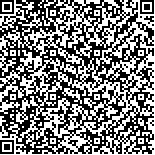| 引用本文: |
李前昆,宾东华,尹园缘,邹巍莹,刘颖,黄静雯,程扬,刘密,王萍,余炼.参苓白术散对克罗恩病大鼠炎症因子IL-1β、IL-1、IL-17C、IL-10及IL-4的影响[J].湖南中医药大学学报,2023,43(8):1361-1367[点击复制] |
|
| |
|
|
| 本文已被:浏览 2027次 下载 1011次 |
| 参苓白术散对克罗恩病大鼠炎症因子IL-1β、IL-1、IL-17C、IL-10及IL-4的影响 |
| 李前昆,宾东华,尹园缘,邹巍莹,刘颖,黄静雯,程扬,刘密,王萍,余炼 |
| (湖南中医药大学, 湖南 长沙 410208;湖南中医药大学第一附属医院, 湖南 长沙 410007;湖南省常德市武陵区疾病预防控制中心, 湖南 常德 415000) |
| 摘要: |
| 目的 观察参苓白术散对克罗恩病(Crohn's disease,CD)大鼠白细胞介素-1β(interleukin-1β,IL-1β)、白细胞介素-1(interleukin-1,IL-1)、白细胞介素-17C(interleukin-17C,IL-17C)、白细胞介素-10(interleukin-10,IL-10)、白细胞介素-4(interleukin-4,IL-4)的影响。方法 将60只SD大鼠随机分为空白组、模型组、美沙拉嗪组(0.21 g·kg-1·d-1)、参苓白术散低剂量组、参苓白术散中剂量组、参苓白术散高剂量组(5.88、11.76、23.59 g·kg-1·d-1),每组10只,雌雄各半。将5% 2,4,6-三硝基苯磺酸(2,4,6-trinitrobenzene sulfonic acid,TNBS)与50%乙醇按1∶1比例混合成TNBS灌肠液,并按3 mL·kg-1的剂量进行CD造模,造模成功后空白组及模型组给予生理盐水灌胃,其余组给予相应药物灌胃。14 d后进行大鼠结肠黏膜损伤指数(colon macroscopic damage index,CMDI)评分;HE染色观察结肠组织的病理学改变,ELISA法检测各组大鼠血清中IL-1β、IL-1、IL-17C、IL-10及IL-4的含量。结果 与空白组比较,模型组大鼠CMDI评分明显升高(P<0.01),病理学改变可见上皮固有层内的单管状的大肠腺稀少且功能形态产生异常,出现淋巴滤泡增生,血清中IL-1β、IL-1、IL-17C水平明显升高(P<0.01),IL-10、IL-4明显下降(P<0.01);与模型组比较,美沙拉嗪组、参苓白术散低、中剂量组及参苓白术散高剂量组CMDI评分降低(P<0.05或P<0.01),病理学改变可见结肠组织黏膜上皮细胞不同程度炎症反应及单管状腺体破坏,参苓白术散低剂量组可见少量血管扩张出血,美沙拉嗪组、参苓白术散低剂量组、参苓白术散中剂量组、参苓白术散高剂量组IL-1β、IL-17C、IL-1水平下降,IL-10、IL-4水平升高(P<0.05或P<0.01);与美沙拉嗪组比较,参苓白术散低剂量组、参苓白术散中剂量组IL-1β、IL-17C水平升高(P<0.05),参苓白术散低剂量组IL-1升高(P<0.01),参苓白术散高剂量组IL-1水平降低(P<0.01),IL-10、IL-17C水平升高(P<0.05或P<0.01)。结论 参苓白术散有助于减轻CD模型大鼠的肠道炎症反应,修复肠道黏膜损伤,其作用机制可能与调节CD模型大鼠炎症因子IL-1、IL-17C、IL-1β、IL-10及IL-4的水平有关。 |
| 关键词: 克罗恩病 参苓白术散 炎症因子 白细胞介素 美沙拉嗪 |
| DOI:10.3969/j.issn.1674-070X.2023.08.004 |
| 投稿时间:2022-12-05 |
| 基金项目:国家自然科学基金项目(81774438);湖南中医药大学校级课题一般项目(2021XJJJ024);湖南省教育厅科学研究优秀青年项目(21B0395);湖南省中医药科研计划项目(E2022035);湖南省大学生创新创业训练计划项目(S202210541109)。 |
|
| Effects of Shenling Baizhu Powder on inflammatory factors IL-1β, IL-1, IL-17C, IL-10, and IL-4 in Crohn's disease rats |
| LI Qiankun,BIN Donghua,YIN Yuanyuan,ZOU Weiying,LIU Ying,HUANG Jingwen,CHENG Yang,LIU Mi,WANG Ping,YU Lian |
| (Hunan University of Chinese Medicine, Changsha, Hunan 410208, China;The First Hospital of Hunan University of Chinese Medicine, Changsha, Hunan 410007, China;Changde Wuling District Center for Disease Control and Prevention, Changde, Hunan 415000, China) |
| Abstract: |
| Objective To observe the effects of Shenling Baizhu Powder (SLBZP) on interleukin-1β (IL-1β), interleukin-1 (IL-1), interleukin-17C (IL-17C), interleukin-10 (IL-10), and interleukin-4 (IL-4) in rats with Crohn's disease (CD). Methods A total of 60 SD rats were randomly divided into blank group, model group, mesalazine group (0.21 g·kg-1·d-1), low-, medium-, and high-dose SLBZP groups (5.88, 11.76, 23.59 g·kg-1·d-1, respectively), 10 rats in each group, half male and half female. Five percent of 2, 4, 6-trinitrobenzene sulfonic acid (TNBS) and fifty percent ethanol were mixed into TNBS enema at a ratio of 1:1, and CD modeling was conducted by the enema at a dose of 3 mL·kg-1. After successful modeling, the blank group and model group were given normal saline by gavage, while the other groups were given corresponding drugs by gavage. After 14 days, the colon macroscopic damage index (CMDI) of rats was scored; HE staining was used to observe the histopathological changes of colon; ELISA was adopted to determine the content of IL-1β, IL-1, IL-17C, IL-10, and IL-4 in serum of rats in each group. Results Compared with the blank group, CMDI score of the model group increased significantly (P<0.01); the pathological changes showed that the single tubular large intestine glands in the epithelial lamina propria were sparse with abnormal forms and function, and hyperplasia of lymphoid follicles appeared; the serum levels of IL-1β, IL-1, and IL-17C increased significantly (P<0.01), but the serum levels of IL-10 and IL-4 decreased significantly (P<0.01). Compared with the model group, CMDI scores of mesalazine group as well as medium- and high-dose SLBZP groups significantly decreased (P<0.05 or P<0.01); the pathological changes showed different degrees of inflammation response in mucosal epithelial cells of colon tissue and destruction of single tubular glands in mesalazine group and low-, medium-, and high-dose SLBZP groups, and a small amount of blood vessel dilation and bleeding in low-dose SLBZP group; the levels of inflammatory factors in mesalazine group and low-, medium-, and high-dose SLBZP groups decreased (P<0.05 or P<0.01). Compared with mesalazine group, the levels of IL-1β and IL-17C in low- and medium-dose SLBZP groups increased (P<0.01); IL-1 level in low-dose SLBZP group increased (P<0.01); in high-dose SLBZP group, IL-1 level decreased (P<0.01), but IL-10 and IL-17C levels increased (P<0.05 or P<0.01). Conclusion SLBZP is helpful in alleviating intestinal inflammation and repairing intestinal mucosal damage in CD model rats, and its mechanism of action may be related to regulating the levels of inflammatory factors IL-1, IL-17C, IL-1β, IL-10, and IL-4. |
| Key words: Crohn's disease Shenling Baizhu Powder inflammatory factors interleukin mesalazine |
|

二维码(扫一下试试看!) |
|
|
|
|




